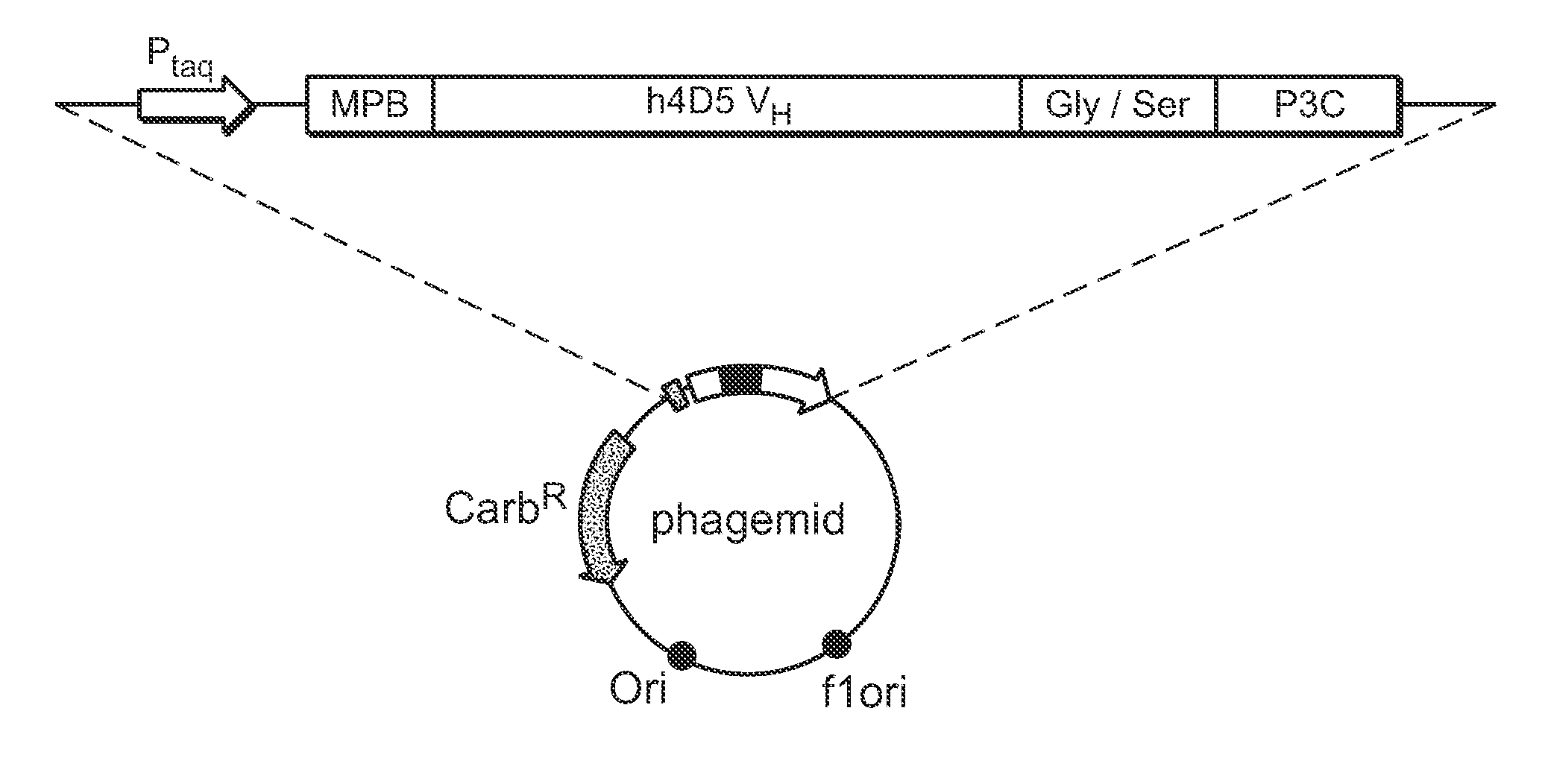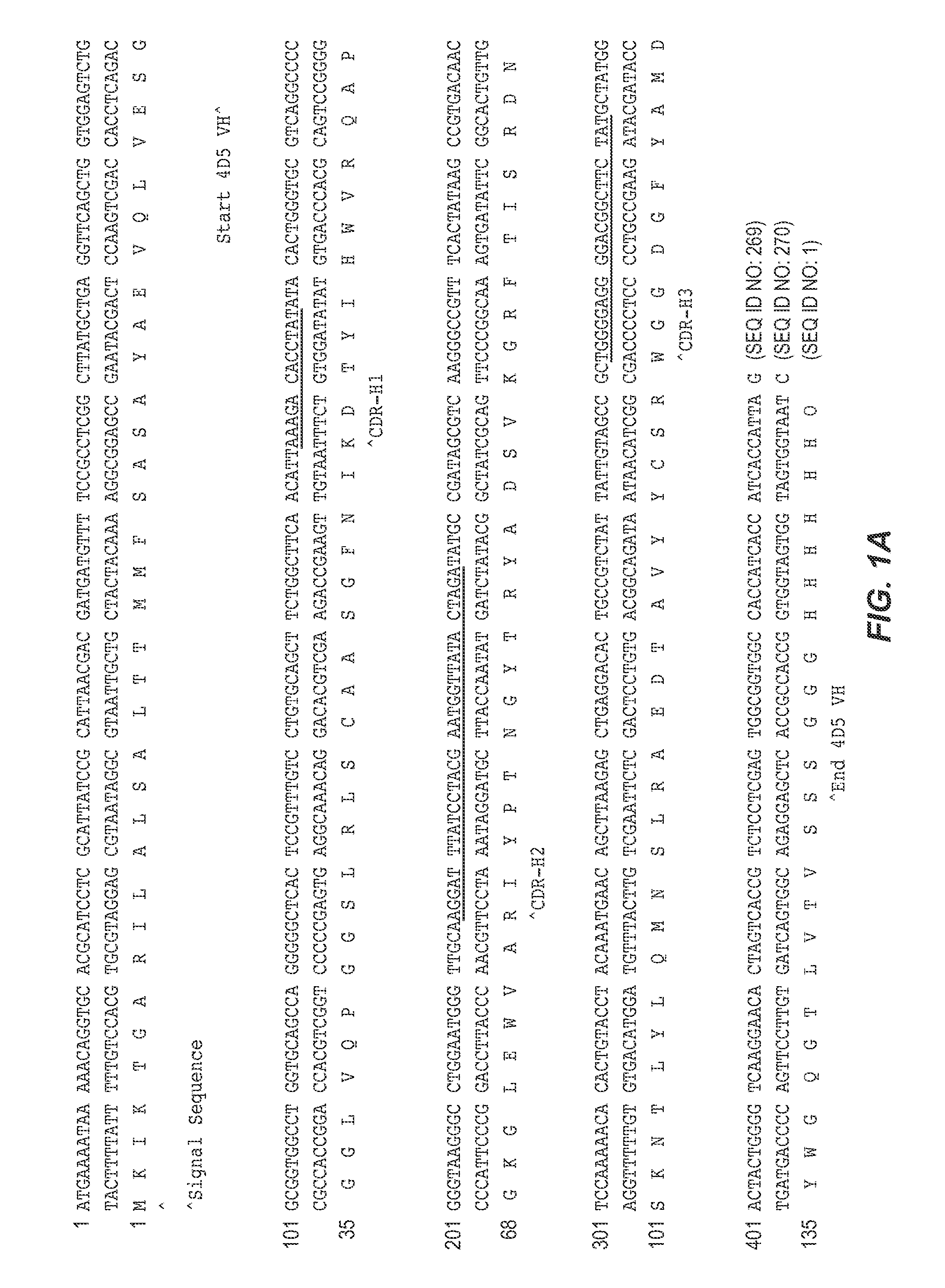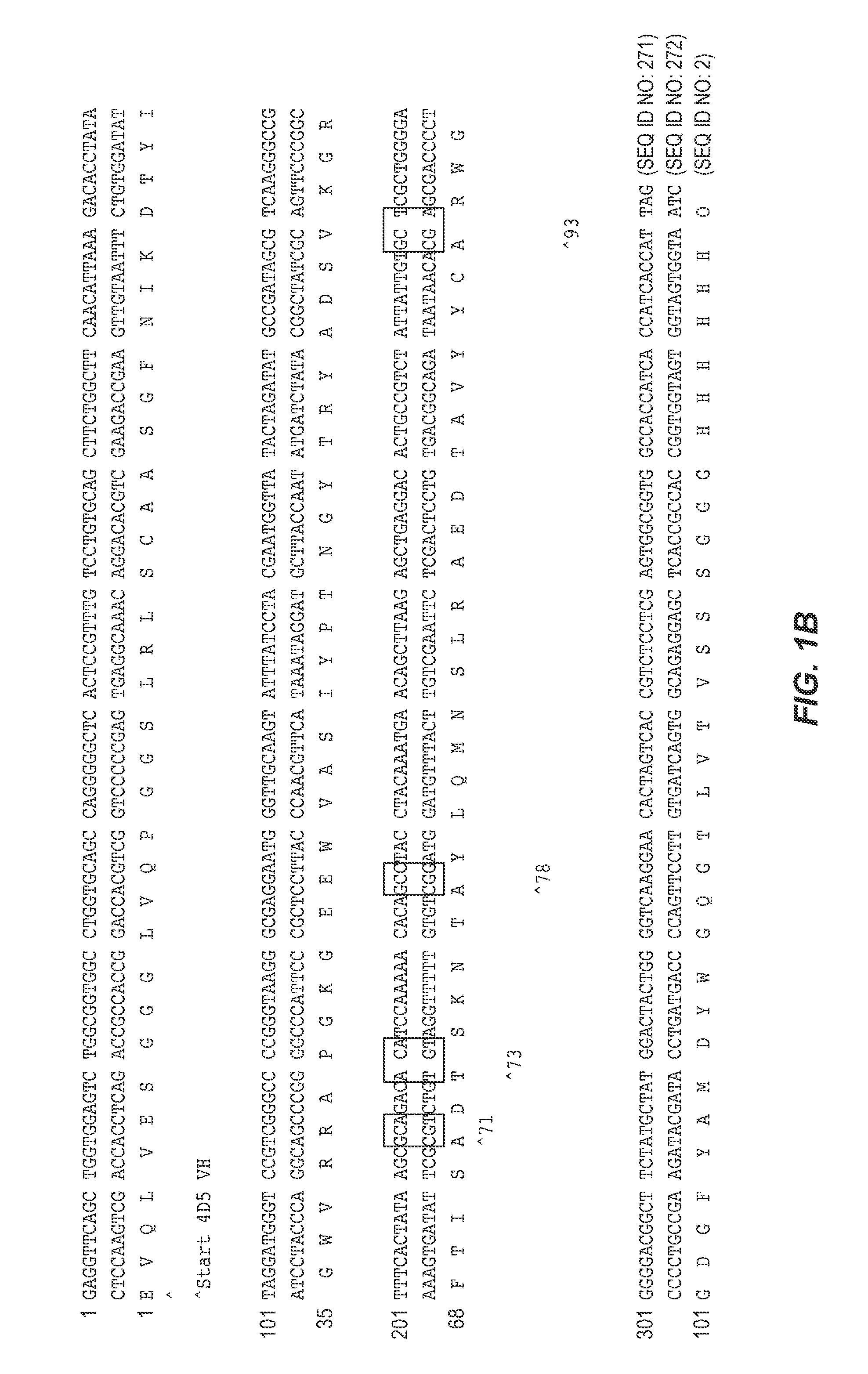Binding polypeptides with optimized scaffolds
a polypeptide and scaffold technology, applied in the field of variable isolated heavy chain variable domains, can solve the problems of reducing the size of the library, affecting so as to increase the stability of the isolated heavy chain antibody variable domain
- Summary
- Abstract
- Description
- Claims
- Application Information
AI Technical Summary
Benefits of technology
Problems solved by technology
Method used
Image
Examples
example 1
Construction, Sorting, and Analysis of Phage-displayed VH Library 1
[0288] A. Preparation of Parental Phagemid Construct
[0289] The VH domain of human antibody 4D5 (Herceptin™) was selected as the parent scaffold for library construction. The amino acid sequence of the 4D5 VH domain used for the following experiments appears in FIG. 1A (SEQ ID NO: 3). The 4D5 VH domain is a member of the VH3 family and binds to Protein A. A phagemid was constructed by insertion of a nucleic acid sequence encoding the open reading frame of the 4D5 VH domain into a phagemid construct using standard molecular biology techniques. The resulting construct, pPAB43431-7, encoded a 4D5 VH domain fusion construct under the control of the IPTG-inducible Ptaq promoter. From the N-terminus to the C-terminus, the 4D5 VH domain fusion protein comprised: a maltose-binding protein signal peptide, the 4D5 VH domain, a Gly / Ser-rich linker peptide, and P3C, as shown in FIG. 2.
[0290] B. Construction of Library 1
[0291]...
example 2
Construction, Sorting, and Analysis of Phage-Displayed VH Domain Library 2
[0315] Of the six clones from Library 1 analyzed in depth, VH domain Lib1—62 had the most useful combination of characteristics for library construction purposes. Lib1—62 was essentially monomeric in solution, expressed well in bacteria, and had a high Tm, with a fully reversible melting curve. Furthermore, it had a high yield in Protein A chromatography assays. These results suggested that the Lib1—62 protein was correctly folded and did not aggregate significantly. Notably, Lib1—62 had only two framework amino acid differences from the wild-type 4D5 VH domain framework amino acid sequence: a glycine at position 37 and a tyrosine at position 55. Modifications were made to the Lib1—62 sequence to ascertain whether the conformational stability of the Lib1—62 VH domain could be further enhanced.
[0316] Construction of the second library involved randomizing residues located in the central VL-contacting interfac...
example 3
Lead Candidate Framework Shotgun-Scanning Analyses
[0321] While Library 2 was constructed to allow soft randomization at positions 35, 37, 39, 44, 45, 47, 50, and 91 (as well as CDR-H3), the Lib2—3 VH domain sequence contained modified residues only at positions 35, 39, 45, and 50 and had wild-type residues at positions 37, 44, 47, and 91. Two further libraries were constructed using Lib2—3 as a starting scaffold to observe any general trends in sequence conservation among correctly folded domains.
[0322] a. Construction of Library 3
[0323] Library 3 was constructed to keep constant the VH-VL interface positions in Lib2—3 that were identical to the wild-type 4D5 VH sequence (positions V37, G44, W47, and Y91) while hard-randomizing those interface positions that had varied from the wild-type 4D5 sequence (positions G35, R39, E45, and S50). The method for library construction was identical to that for Library 1 (see Example 1B), and used the same stop template as that used in the cons...
PUM
| Property | Measurement | Unit |
|---|---|---|
| temperature | aaaaa | aaaaa |
| temperature | aaaaa | aaaaa |
| temperature | aaaaa | aaaaa |
Abstract
Description
Claims
Application Information
 Login to View More
Login to View More - R&D
- Intellectual Property
- Life Sciences
- Materials
- Tech Scout
- Unparalleled Data Quality
- Higher Quality Content
- 60% Fewer Hallucinations
Browse by: Latest US Patents, China's latest patents, Technical Efficacy Thesaurus, Application Domain, Technology Topic, Popular Technical Reports.
© 2025 PatSnap. All rights reserved.Legal|Privacy policy|Modern Slavery Act Transparency Statement|Sitemap|About US| Contact US: help@patsnap.com



